Features
Space Explorations – James Webb telescope
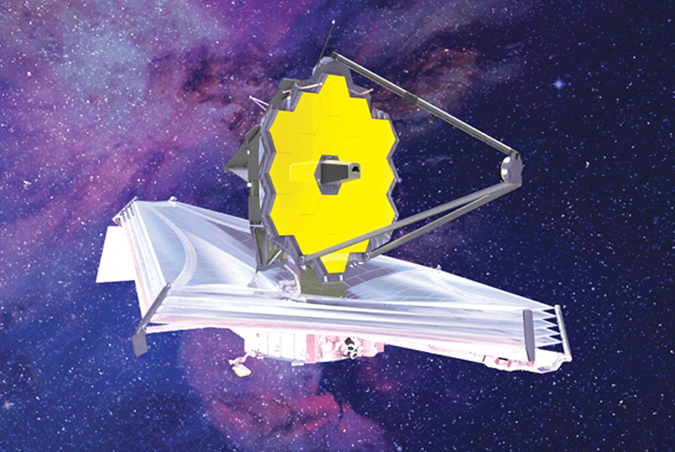
By LIONEL PALLIYAGURU
I have been a sky gazer for more than four decades, a habit which started in my school days. As an amateur astronomer, stargazing usually starts from the backyard, with or without any supporting instruments like binoculars or telescopes. Identifications of whatever celestial objects become the first task, with the help of elders who are relaxing in the backyard invariably after supper.
As one develops a keen interest in astronomy, reading and studying astronomy with advanced telescopes become a reality. I have passed many stages in life, and enjoy my retirement life devoting ample time to my hobbies of which astronomy becomes my favourite subject.
It is well known that the James Webb Space Telescope (JWST or WEBB) is in operation with full potential, and incredible photos sent by JWST of distant galaxies could be seen on the NASA website as well as on public media.In order to explore the universe, various projects have been launched by many countries, of which NASA and the European space agency have contributed, by placing complex telescopes operational in outer space.
It is well known that the JWST is the most advanced telescope in operation since July 2022. It is equipped with the most sophisticated instruments with state-of-the-art technologies, and surpasses the capabilities of the Hubble Space Telescope (HST or HUBBLE), which was launched in 1990.
JWST was launched in December 2021 on an Ariane 5 rocket and travelled 1.6 million kilometres in space, to reach its final orbit around the sun, which takes one year to complete one revolution. Whereas its predecessor, HST was launched using Space Shuttle Discovery and placed in a geocentric orbit around the Earth with, an altitude of 547 kilometres at an elevation angle of 28 degrees with the equator. HST takes about 95 minutes to go around the earth and completes 15 orbits per day.
HST is equipped with instruments to probe the composition of the atmosphere of our solar system and extrasolar planets, normally referred to as exoplanets. HUBBLE can capture ultraviolet, visible, and near-infrared wavelengths of light. Although near-infrared radiation is detectable by the human eye, mid and far-infrared regions are less susceptible to the human eye. As the Hubble Space Telescope operates above 547 kilometres above Earth, Hubble can capture visible and infrared spectra with minimum interference.
In order to obtain a high degree of accuracy, space observations should be carried out outside the earth’s atmosphere, where obstruction to visible light and infrared light is minimal. Mathematician Joseph Louis Lagrange has discovered five locations with respect to the sun and earth, where observatories could be parked for various astronomical activities. They are known as Lagrange points and are denoted as L1, L2, L3, L4 and L5. in honour of him.
In these special locations, gravitational and rotational forces cancel each other out, creating ample parking space for telescopes and observatories. Any small mass object placed at the Lagrange point, moves in sync with the Earth, although they are in two different orbits around the sun.
The L2 point is advantageous in many ways for astronomy. The JWST can communicate continuously with Earth while providing a clear view into deep space. Interference from Sun and Earth could be kept to a minimum, as Sun and Earth are behind the telescope. Sun, Earth and L2 points are on a straight line keeping L2 at 151.5 million kilometres away from the Sun and 1.5 million kilometres away from the Earth. To stay in this position minimum station-keeping manoeuvres have to be performed occasionally, which reduces the propellant requirement considerably. As a result, the lifetime of the JWST is increased proportionately.
It took about twenty years to develop the most powerful telescope, costing 10 billion US dollars, in collaboration with the National Aeronautics and Space Administration (NASA), the European Space Agency (ESA), and the Canadian Space Agency (CSA). In addition to the main collaborators, there were about 15 other countries involved and contributed in many ways to making this mission a reality. This astronomical telescope was named as James Webb Space Telescope in honour of James Edwin Webb, who served NASA as an administrator during many critical space missions.
JWST design exceeds all the capabilities of its predecessor, and is expected to uncover the mysteries of the universe, by observing events that have taken place at a distance of 13.6 billion light-years away from Earth. In astronomy, distance is measured in light years. Light-year is the distance that light travels in a year at a speed of 300,000 kilometres per second, which is equivalent to 9.46 trillion kilometres.
Telescopes can go back in time. Looking out in space is looking back in time. Light takes time to travel vast distances in space to reach us. The light from the moon, which is about 390,000 kilometres away from us, takes 1.3 seconds to reach us meaning that we see the moon 1.3 seconds ago. Similarly, light takes about eight minutes to travel from the Sun, which is about 150 million kilometres away from the Earth. Inferring from that, what we see is the Sun about eight minutes ago. When the distances are in the order of billions, light takes years to reach the earth.
JWST is equipped with a) Mid-Infrared Instrument (MIRI), b) Near-Infrared Camera (NIRCam), c) Near-Infrared Spectrograph (NIRSpec), d) Fine Guidance Sensor (FGS), e) Near-Infrared Imager and Slitless Spectrograph(NIRISS). These equipment facilitate measurements of Redshift and Spectroscopy of various objects in the universe such as stars, galaxies, etc. As these instruments monitor the infrared region of the electromagnetic spectrum, all equipment has to be cryogenically cooled to avoid interference within equipment and from outside. The operating temperature is set to minus 266 degrees celsius, which is closer to absolute zero. Absolute zero is minus 273.15 degrees celsius, and the lowest possible temperature to reach. Extremely low operating temperature indicates the unprecedented sensitivity of its infrared equipment.
NASA claims that the sensitivity of infrared equipment onboard the WEBB could detect the heat of a bumblebee at a distance from the moon. Further, details of a small coin of one-centimetre size could be seen at a distance of 40 kilometres away.
In astronomy, redshift has been classified into three categories namely; a) Gravitational, b)Doppler, and c) Cosmological. Redshift is a phenomenon applicable to light sources moving away from an observer. In general, redshift is defined as an apparent increase in the wavelength (or decrease in frequency) of light waves, received from a moving source away from an observer. This is due to the stretching of the wavelength towards the red boundary of the spectrum.
Conversely, when the moving source of light is approaching the observer, a decrease in the wavelength (or increase in frequency) occurs. This is due to apparent compression of wavelength towards the blue boundary of the spectrum known as Blueshift.
Also, when a star rotates, one edge of the star is moving towards us relative to its centre, while the other edge is moving away. As a result, light from one edge of a star is slightly red-shifted, while light from the other edge is slightly blue-shifted. Astronomers can use these two shifts in order to calculate how fast a star is rotating. The same approach can be used to calculate how fast a galaxy is rotating. By evaluating the Redshift, the distance and velocity of any space object could be calculated. Conversely, Blueshift provides parameters of distance and velocity of an approaching object.
Astronomical spectroscopy is mainly concerned with the analysis of objects such as stars, planets, nebulas, and galaxies in space. It is done by splitting the received infrared spectrum into its various wavelength components. The spectrum patterns of a star can be compared with known spectrum patterns of hydrogen, oxygen, carbon and other elements to determine the physical and chemical composition of the star.
The media has shown magnificent and colourful photos of various stars, galaxies and nebulas released by NASA. Anybody would wonder about the process of producing such stunning photos from faraway galaxies many light years away from the Earth. These images are captured using infrared cameras and the spectrum is split into many different frequency bands using filters. Different colours are assigned to each frequency band during processing to obtain spectacular photos. A similar process is being used in digital colour cameras in processing visible light photos.
James Webb Space Telescope is expected to function at full capacity for a minimum of 10 year period. Scientists and Astronomers work tirelessly to explore discoveries of our universe, and life beyond our Earth, which is one of the key objectives of this mission.
This writer could be contacted on – lionelpg@gmail.com
Features
SL urged to use GSP+ to the fullest to promote export development
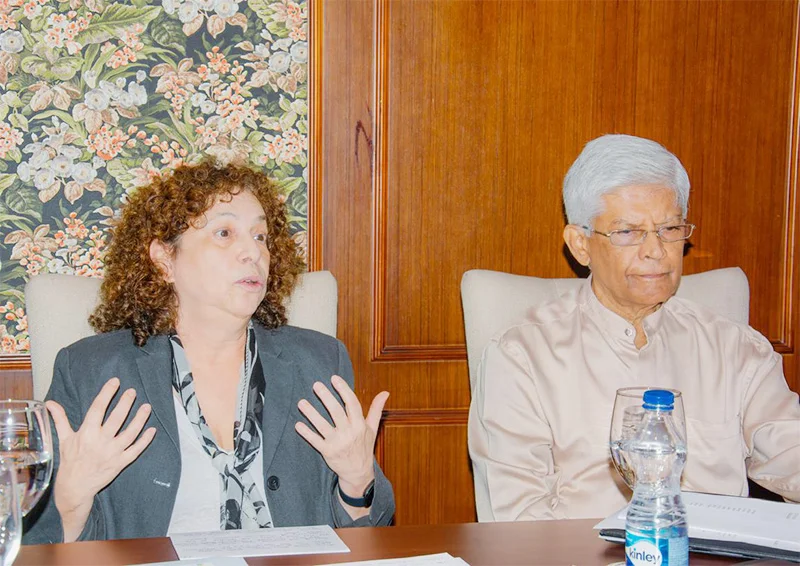
 Sri Lanka needs to take full stock of its current economic situation and use to the maximum the potential in its GSP+ facility for export sector growth. In the process, it should ensure that it cooperates fully with the European Union. The urgency of undertaking these responsibilities is underscored by the issues growing out of the recent US decision to sweepingly hike tariffs on its imports, though differentially.
Sri Lanka needs to take full stock of its current economic situation and use to the maximum the potential in its GSP+ facility for export sector growth. In the process, it should ensure that it cooperates fully with the European Union. The urgency of undertaking these responsibilities is underscored by the issues growing out of the recent US decision to sweepingly hike tariffs on its imports, though differentially.
These were principal ‘takes’ for participants in the Pathfinder Foundation’s Ambassadors’ Roundtable forum held on April 8th at the Colombo Club of the Taj Samudra. The main presenter at the event was Ms. Carmen Moreno Raymundo, Ambassador of the European Union to Sri Lanka and the Maldives. The forum was chaired by Ambassador Bernard Goonetilleke, Chairman, Pathfinder Foundation. The event brought together a cross-section of the local public, including the media.
Ms. Moreno drew attention to the fact Sri Lanka is at present severely under utilizing its GSP+ facility, which is the main means for Sri Lanka to enter the very vast EU market of 450 million people. In fact the EU has been Sri Lanka’s biggest trading partner. In 2023, for instance, total trade between the partners stood at Euros 3.84 billion. There is no greater market but the EU region for Sri Lanka.
‘However, only Sri Lanka’s apparel sector has seen considerable growth over the years. It is the only export sector in Sri Lanka which could be said to be fully developed. However, wider ranging export growth is possible provided Sri Lanka exploits to the fullest the opportunities presented by GSP+.’
Moreno added, among other things: ‘Sri Lanka is one among only eight countries that have been granted the EU’s GSP+ facility. The wide-ranging export possibilities opened by the facility are waiting to be utilized. In the process, the country needs to participate in world trade in a dynamic way. It cannot opt for a closed economy. As long as economic vibrancy remains unachieved, Sri Lanka cannot enter into world trading arrangements from a strong position. Among other things, Sri Lanka must access the tools that will enable it to spot and make full use of export opportunities.
‘Sri Lanka must facilitate the private sector in a major way and make it possible for foreign investors to enter the local economy with no hassle and compete for local business opportunities unfettered. At present, Lanka lacks the relevant legal framework to make all this happen satisfactorily.
‘Sri Lanka cannot opt for what could be seen as opaque arrangements with bilateral economic partners. Transparency must be made to prevail in its dealings with investors and other relevant quarters. It’s the public good that must be ensured. The EU would like to see the local economy further opening up for foreign investment.
‘However, it is important that Sri Lanka cooperates with the EU in the latter’s efforts to bring about beneficial outcomes for Sri Lankans. Cooperation could be ensured by Sri Lanka fully abiding by the EU conditions that are attendant on the granting of GSP+. There are, for example, a number of commitments and international conventions that Sri Lanka signed up to and had promised to implement on its receipt of GSP+ which have hitherto not been complied with. Some of these relate to human rights and labour regulations.
‘Successive governments have pledged to implement these conventions but thus far nothing has happened by way of compliance. GSP+ must be seen as an opportunity and not a threat and by complying with EU conditions the best fruits could be reaped from GSP+. It is relevant to remember that GSP+ was granted to Sri Lanka in 2005. It was suspended five years later and restored in 2017.
‘The importance of compliance with EU conditions is greatly enhanced at present in view of the fact that Sri Lanka is currently being monitored by the EU with regard to compliance ahead of extending GSP+ next year. A report on Sri Lanka is due next year wherein the country’s performance with regard to cooperating with the EU would be assessed. The continuation of the facility depends on the degree of cooperation.
‘A few statistics would bear out the importance of Sri Lanka’s partnership with the EU. For example, under the facility Sri Lanka benefits from duty free access in over 66% of EU tariff lines. The highest number of tourist arrivals in Sri Lanka in 2023 was from the EU’s 27 member states. Likewise, the EU’s 27 member states rank second in the origin of inflows of foreign exchange to Sri Lanka; with Italy, France and Germany figuring as the main countries of origin. Eighty five percent of Sri Lanka’s exports to the EU market benefits from GSP+. Thus, the stakes for the country are high.’
Meanwhile, President, In-house Counsel & Legal Advisor, The European Chamber of Commerce of Sri Lanka, John Wilson said: ‘GSP+ should be seen as not only an opportunity but also as a necessity by Sri Lanka in the current international economic climate. ‘Implementation of local laws is what is needed. Considering the pressures growing out of the US imposed new tariff regime, a good dialogue with the EU is needed.
‘Sri Lanka’s level of business readiness must be upped. Among the imperatives are: An electronic procurement process, Customs reforms, a ‘National Single Window’, stepped-up access to land by investors, for example, a clear policy framework on PPPs and reform of the work permits system.’
It ought to be plain to see from the foregoing that Sri Lanka cannot afford to lose the GSP+ facility if it is stepped-up economic growth that is aimed at. It would be in Sri Lanka’s best interests to remain linked with the EU, considering the aggravated material hardships that could come in the wake of the imposition of the US’ new tariff regime. Sri Lanka would need to remain in a dialogue process with the EU, voice its reservations on matters growing out of GSP+, if any, iron out differences and ensure that its national interest is secured.
Features
SENSITIVE AND PASSIONATE…

Chit-Chat
Chiara Tissera
Mrs. Queen of the World Sri Lanka 2024, Chiara Tissera, leaves for the finals, in the USA, next month
I had a very interesting chat with her and this is how it all went:
1. How would you describe yourself?
I am a sensitive and passionate individual who deeply cares about the things that matter most to me. I approach life with a heart full of enthusiasm and a desire to make meaningful connections.
2. If you could change one thing about yourself, what would it be?
Actually, I wouldn’t change a thing about myself because the person I am today, both inside and out, is the result of everything I’ve experienced. Every part of me has shaped who I am, so I embrace both my strengths and imperfections as they make me uniquely me.
3. If you could change one thing about your family, what would it be?
If there’s one thing I could change about my family, it would be having my father back with us. Losing him six years ago left a void that can never be filled, but his memory continues to guide and inspire us every day.
4. School?
I went to St. Jude’s College, Kurana, and I’m really proud to say that the lessons I gained during my time there have shaped who I am today. My school and teachers instilled in me values of hard work, perseverance and the importance of community, and I carry those lessons with me every day. I was a senior prefect and was selected the Deputy Head Prefect of our college during my tenure.
5. Happiest moment?
The happiest moment of my life so far has been winning the Mrs. Sri Lanka 2024 for Queen of the World. It was a dream come true and a truly unforgettable experience, one that fills me with pride and gratitude every time I reflect on it.
6. What is your idea of perfect happiness?
Happiness is a deeply personal and multifaceted feeling that often comes from a sense of contentment, fulfillment and well-being. For me, perfect happiness is in moments of joy, peace and accomplishments … and also being surrounded by my loved ones.
7. Are you religious?
Yes, I’m a very religious person. And I’m a firm believer in God. My faith guides me through life, providing strength, dedication and a sense of peace in every situation. I live by the quote, ‘Do your best, and God will do the rest.’
8. Are you superstitious?
I’m not superstitious. I believe in making my own decisions and relying on logic and faith rather than following superstitions.
9. Your ideal guy?
My ideal guy is my husband. He is compassionate, understanding and is always there to support me, no matter what. He’s my rock and my best friend – truly everything I could ever want in a partner.
10. Which living person do you most admire?
The living person I admire the most is definitely my mummy. Her strength, love and unwavering support has shaped me into who I am today. She is my role model and she inspires me every day with her wisdom and kindness.
11. Your most treasured possession?
My most treasured possession is my family. They are the heart of my life, providing me with love, support and strength. Their presence is my greatest blessing.
12. If you were marooned on a desert island, who would you like as your companion?
I would like to have my spouse as my companion. Together, we could make the best of the situation, supporting each other, sharing moments of laughter and finding creative ways to survive and thrive.
13. Your most embarrassing moment?
There’s quite a few, for sure, but nothing is really coming to mind right now.
14. Done anything daring?
Yes, stepping out of my comfort zone and taking part in a pageant. I had no experience and was nervous about putting myself out there, but I decided to challenge myself and go for it. It pushed me to grow in so many ways—learning to embrace confidence, handle pressure, and appreciate my own uniqueness. The experience not only boosted my self-esteem but also taught me the value of taking risks and embracing new opportunities, even when they feel intimidating.”
15. Your ideal vacation?
It would be to Paris. The city has such a magical vibe and, of course, exploring the magical Eiffel Tower is in my bucket list. Especially the city being a mix of history culture and modern life in a way that feels timeless, I find it to be the ideal vacation spot for me.
16. What kind of music are you into?
I love romantic songs. I’m drawn to its emotional depth and the way they express love, longing a connection. Whether it’s a slow ballad, a classic love song or a more modern romantic tune these songs speak to my heart.
17. Favourite radio station?
I don’t have a specific radio station that I like, but I tend to enjoy a variety of stations, depending on my mood. Sometimes I’ll tune into one for a mix of popular hits, other times I might go for something more relaxing, or a station with a certain vibe. So I just like to keep it flexible and switch it up.
18. Favourite TV station?
I hardly find the time to sit down and watch TV. But, whenever I do find a little spare time, I tend to do some spontaneous binge – watching, catching whatever interesting show is on at that moment.
19 What would you like to be born as in your next life?
Mmmm, I’ve actually not thought about it, but I’d love to be born as someone who gets to explore the world freely – perhaps a bird soaring across continents.
20. Any major plans for the future?
Let’s say preparing and participating in the international pageant happening in the USA this May. It’s an exciting opportunity to represent myself and my country on a global stage. Alongside this, I am dedicated to continuing my social service work as a title holder, striving to make a meaningful difference in the lives of others through my platform.
Features
Fresher looking skin …

 The formation of wrinkles and fine lines is part of our ageing process. However, if these wrinkles negatively impact appearance, making one look older than they actually are, then trying out some homemade remedies, I’ve listed for you, this week, may help in giving your skin a fresher look.
The formation of wrinkles and fine lines is part of our ageing process. However, if these wrinkles negatively impact appearance, making one look older than they actually are, then trying out some homemade remedies, I’ve listed for you, this week, may help in giving your skin a fresher look.
* Banana:
Bananas are considered to be our skin’s best friend. They contain natural oils and vitamins that work very perfectly to boost our skin health. Skincare experts recommend applying the banana paste to the skin.
Take a ripe banana and mash a quarter of it until it becomes a smooth paste. Apply a thin layer of the banana paste on your skin and allow it to sit for 15 to 20 minutes before washing it off with warm water.
* Olive Oil:
Olive oil works as a great skin protector and many types of research suggest that even consuming olive oil may protect the skin from developing more wrinkles. Olive oil contains compounds that can increase the skin’s collagen levels. Yes, olive oil can be used as a dressing on your salads, or other food, if you want to consume it, otherwise, you can apply a thin layer of olive oil on your face, neck and hands and let it stay overnight.
* Ginger:
Ginger serves to be a brilliant anti-wrinkle remedy because of the high content of antioxidants in it. Ginger helps in breaking down elastin, which is one of the main reasons for wrinkles. You can have ginger tea or grate ginger and have it with honey, on a regular basis.
* Aloe Vera:
The malic acid present in Aloe Vera helps in improving your skin’s elasticity, which helps in reducing your wrinkles. Apply the gel once you extract it from the plant, and leave it on for 15-20 minutes. You can wash it off with warm water.
* Lemons:
Lemons contain citric acid, which is a strong exfoliant that can help you get rid of your dead skin cells and wrinkles. Also, as an astringent and a cleansing agent, it helps to fade your wrinkles and fine lines. You can gently rub a lemon slice in your wrinkled skin and leave it on for 10-15 minutes. Rinse afterwards and repeat this process two to three times a day.
* Coconut Oil:
Coconut oil contains essential fatty acid that moisturises the skin and helps to retain its elasticity. You can directly apply the coconut oil, and leave it overnight, after gently massaging it, for the best results.
-

 Business3 days ago
Business3 days agoColombo Coffee wins coveted management awards
-
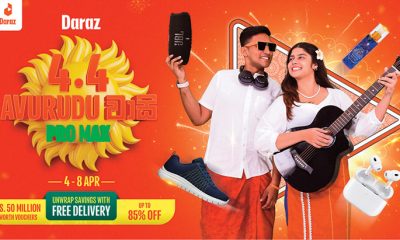
 Business5 days ago
Business5 days agoDaraz Sri Lanka ushers in the New Year with 4.4 Avurudu Wasi Pro Max – Sri Lanka’s biggest online Avurudu sale
-

 Features4 days ago
Features4 days agoStarlink in the Global South
-
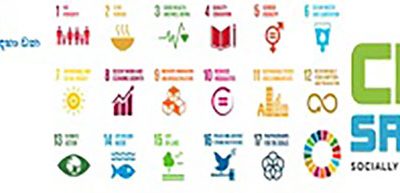
 Business6 days ago
Business6 days agoStrengthening SDG integration into provincial planning and development process
-
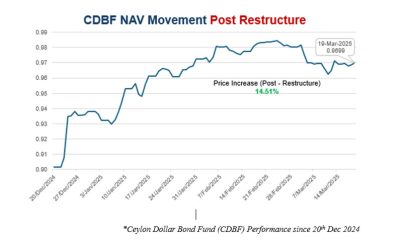
 Business5 days ago
Business5 days agoNew SL Sovereign Bonds win foreign investor confidence
-

 Features1 day ago
Features1 day agoSri Lanka’s Foreign Policy amid Geopolitical Transformations: 1990-2024 – Part III
-
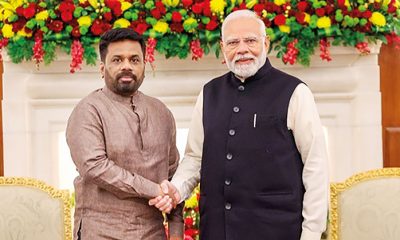
 Features4 days ago
Features4 days agoModi’s Sri Lanka Sojourn
-
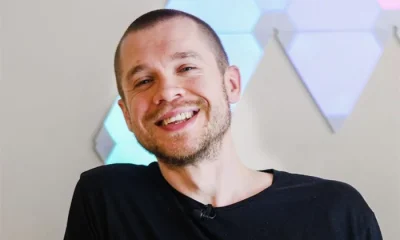
 Midweek Review1 day ago
Midweek Review1 day agoInequality is killing the Middle Class











